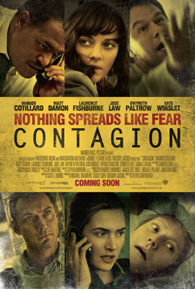
With Contagion, Steven Soderbergh has risen to this particular challenge. Modelling itself on the SARS and H1N1 outbreaks, Contagion depicts what might have been if the SARS epidemic were more widespread or H1N1 more deadly. Soderbergh trusts in his audience’s familiarity with the subject to create the sense of rising terror in the film, leaving him free to abandon the over-the-top histrionics of earlier medical disaster films like Outbreak, for instance.
In documentary-like fashion, Soderbergh’s quick editing takes us from Hong Kong to Macau, Tokyo, Chicago, and Wisconsin, following the path of the deadly flu virus and its superspreader (Gwyneth Paltrow). Like a procedural film, Contagion traces with chilling realism how the international medical community, civil servants, and the public would probably react to a fatal, fast-spreading virus. There are no acts of selfless courage and heroism or outright villains but a community of flawed heroes – self-interested researchers, scaremongering bloggers, paranoid military men, bumbling conspirators reacting against their delusions of global conspiracies, citizens driven to desperate acts – all hurtling along as the global pandemic unfolds and claims its victims.
The cast play each of their roles to a minimalist perfection (aside from Jude Law, who plays an appropriately smarmy and oily blogger – the film’s closest to a villain), allowing the story to be drawn on Soderbergh’s grand canvass. Contagion comes across as a thinking man’s disaster movie.












 列印版本
列印版本









